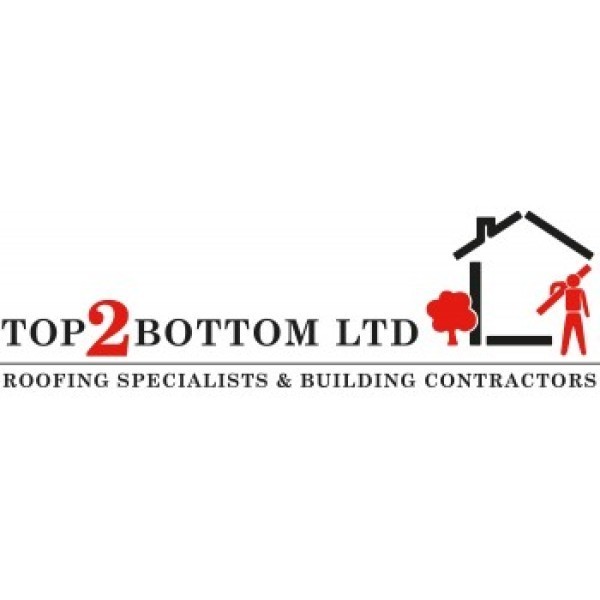Loft Conversions in Sheerness
Filter your search
Post your job FREE and let trades come to you
Save time by filling out our simple job post form today and your job will be sent to trades in your area so you can sit back, relax and wait for available trades to contact you.
Post your job FREESearch Loft Conversions in places nearby
Understanding Loft Conversions in Sheerness
Loft conversions in Sheerness have become a popular choice for homeowners looking to maximise their living space without the hassle of moving. This charming seaside town offers a unique blend of coastal beauty and historical charm, making it an ideal location for enhancing your home. In this article, we'll explore the ins and outs of loft conversions, providing you with a comprehensive guide to transforming your attic into a functional and stylish living area.
The Benefits of Loft Conversions
Loft conversions offer numerous advantages, making them a worthwhile investment for many homeowners. Firstly, they provide additional living space, which can be used for various purposes such as a bedroom, office, or playroom. This extra space can significantly enhance your home's functionality and comfort.
Moreover, loft conversions can increase the value of your property. In Sheerness, where property prices are steadily rising, adding a loft conversion can be a smart financial move. It not only boosts your home's market value but also makes it more attractive to potential buyers.
Another benefit is the opportunity to customise your living space. With a loft conversion, you have the freedom to design the area according to your preferences and needs, creating a unique and personalised environment.
Types of Loft Conversions
There are several types of loft conversions to consider, each with its own set of features and benefits. The most common types include:
- Dormer Loft Conversion: This type involves extending the existing roof to create additional floor space and headroom. Dormer conversions are popular due to their versatility and ability to accommodate various room layouts.
- Mansard Loft Conversion: Typically found in older properties, mansard conversions involve altering the roof structure to create a flat roof with a slight slope. This type offers maximum space and is ideal for creating large, open-plan areas.
- Hip to Gable Loft Conversion: Suitable for homes with a hipped roof, this conversion extends the roof's sloping side to create a vertical wall, increasing the usable space.
- Velux Loft Conversion: The simplest and most cost-effective option, Velux conversions involve installing roof windows to bring in natural light without altering the roof structure.
Planning Permission and Building Regulations
Before embarking on a loft conversion in Sheerness, it's essential to understand the planning permission and building regulations involved. Generally, loft conversions fall under permitted development rights, meaning you may not need planning permission. However, there are exceptions, especially if your property is in a conservation area or has specific restrictions.
Building regulations, on the other hand, are mandatory for all loft conversions. These regulations ensure that the conversion meets safety and structural standards, covering aspects such as fire safety, insulation, and access. It's crucial to work with a qualified architect or builder to ensure compliance with these regulations.
Designing Your Loft Conversion
Designing your loft conversion is an exciting process that allows you to create a space tailored to your needs. Start by considering the purpose of the room and how you envision using it. This will guide your design choices and help you create a functional layout.
When designing your loft conversion, think about the placement of windows to maximise natural light. Skylights and dormer windows are popular choices that can brighten the space and create a sense of openness.
Additionally, consider the interior design elements such as flooring, wall colours, and furnishings. These details can significantly impact the overall look and feel of the space, so choose elements that reflect your style and complement the rest of your home.
Choosing the Right Contractor
Selecting the right contractor is crucial to the success of your loft conversion project. Look for a contractor with experience in loft conversions and a solid reputation in the Sheerness area. Ask for references and view their previous work to ensure they meet your standards.
It's also important to obtain multiple quotes and compare them to ensure you're getting a fair price. Remember, the cheapest option isn't always the best, so consider the quality of work and materials when making your decision.
Cost Considerations
The cost of a loft conversion in Sheerness can vary depending on several factors, including the type of conversion, the size of the space, and the materials used. On average, a basic loft conversion can cost between £20,000 and £40,000, while more complex projects may exceed this range.
When budgeting for your loft conversion, consider additional costs such as planning fees, building regulation fees, and any necessary structural work. It's also wise to set aside a contingency fund for unexpected expenses that may arise during the project.
Maximising Space and Storage
One of the key challenges of a loft conversion is making the most of the available space. Clever storage solutions can help you maximise the area and keep it organised. Consider built-in wardrobes, shelving, and under-eaves storage to utilise every inch of space.
Furniture choices also play a significant role in space optimisation. Opt for multi-functional furniture such as sofa beds or foldable desks to make the most of the room's versatility.
Ensuring Energy Efficiency
Energy efficiency is an important consideration for any home improvement project, including loft conversions. Proper insulation is crucial to maintaining a comfortable temperature and reducing energy costs. Ensure that your loft conversion includes adequate insulation in the walls, roof, and floors.
Additionally, consider energy-efficient windows and lighting options to further enhance the space's efficiency. LED lighting and double-glazed windows are excellent choices that can help reduce your carbon footprint and save on energy bills.
Incorporating Natural Light
Natural light can transform a loft conversion, making it feel more spacious and inviting. Consider installing large windows or skylights to bring in as much natural light as possible. This not only enhances the aesthetic appeal of the space but also has positive effects on mood and well-being.
When positioning windows, think about the direction of sunlight throughout the day to maximise light exposure. South-facing windows, for example, receive more sunlight and can help warm the space during cooler months.
Addressing Common Challenges
Loft conversions can present several challenges, but with careful planning and expert guidance, these can be overcome. One common issue is limited headroom, which can be addressed by choosing the right type of conversion or adjusting the roof structure.
Another challenge is ensuring adequate access to the loft. A well-designed staircase is essential for safe and convenient access, and it should be integrated into the existing layout without compromising space.
Legal and Safety Considerations
Legal and safety considerations are paramount when undertaking a loft conversion. Ensure that your project complies with all relevant building regulations and safety standards. This includes fire safety measures such as smoke alarms and escape routes.
It's also important to consider the structural integrity of your home. A professional structural engineer can assess your property's suitability for a loft conversion and recommend any necessary reinforcements.
Adding Personal Touches
Personalising your loft conversion is a wonderful way to make the space truly your own. Consider adding unique design elements such as custom lighting fixtures, artwork, or a feature wall to reflect your personality and style.
Incorporating personal touches not only enhances the aesthetic appeal of the space but also creates a warm and inviting atmosphere that you'll enjoy for years to come.
Maintaining Your Loft Conversion
Once your loft conversion is complete, regular maintenance is essential to keep it in top condition. This includes routine checks for any signs of wear and tear, such as leaks or cracks, and addressing them promptly to prevent further damage.
Additionally, ensure that the space is well-ventilated to prevent issues such as dampness or mould. Regular cleaning and upkeep will also help maintain the space's appearance and functionality.
Frequently Asked Questions
- Do I need planning permission for a loft conversion in Sheerness? In most cases, loft conversions fall under permitted development rights, but it's important to check with your local council for specific requirements.
- How long does a loft conversion take? The duration of a loft conversion can vary depending on the complexity of the project, but it typically takes between 6 to 12 weeks.
- Can I convert any loft? Not all lofts are suitable for conversion. Factors such as headroom, roof structure, and access need to be considered. A professional assessment can determine feasibility.
- What is the best type of loft conversion? The best type of loft conversion depends on your home's structure, your budget, and your personal preferences. Consulting with a professional can help you make the right choice.
- Will a loft conversion add value to my home? Yes, a well-executed loft conversion can increase your property's value and appeal to potential buyers.
- How can I ensure my loft conversion is energy efficient? Proper insulation, energy-efficient windows, and LED lighting are key components of an energy-efficient loft conversion.
In conclusion, loft conversions in Sheerness offer a fantastic opportunity to enhance your home, providing additional space, increasing property value, and allowing for personalisation. With careful planning, expert guidance, and attention to detail, you can create a beautiful and functional loft conversion that meets your needs and complements your lifestyle.




































